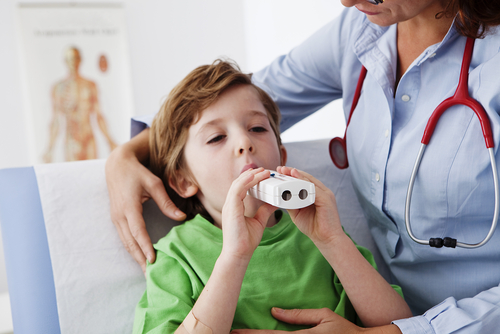 A new study entitled “Comparison of breath gases, including acetone,with blood glucose and blood ketones in children and adolescents with type1 diabetes,” suggests that a new non-invasive diagnostic breath test may be used to type 1 diabetes in children. The study was published in the November issue of Journal of Breath Research.
A new study entitled “Comparison of breath gases, including acetone,with blood glucose and blood ketones in children and adolescents with type1 diabetes,” suggests that a new non-invasive diagnostic breath test may be used to type 1 diabetes in children. The study was published in the November issue of Journal of Breath Research.
Type 1 diabetes develops as a result of the destruction of the insulin-producing betacells in the pancreas, leading to increased levels of glucose in the blood. The disease incidence has increased in children, as indicated by the 21% increase in children (less than 9 years old) from 2001 to 2009.
While type 1 diabetes is usually diagnosed with a blood test, recent research suggests that breath gases were associated with the levels of glucose and ketone levels in the blood of adults with both types of diabetes (type 1 and type 2). The authors in this study sought to discover if the same association was observed in children and young individuals with type 1 diabetes. They collected gases in breath bags and blood samples from children and adolescents with type 1 diabetes that attended the Oxford Children’s Hospital. In total, they collected samples from 113 young people — with 59 being male, with type 1 diabetes and ages between 7 and 18 years old.
The authors measured the levels of two gases — isoprene and acetone — and its levels were compared to glucose and ketone levels present in the blood. The researchers found a significant relationship between increased acetone levels in the breath gases with higher levels of blood ketones, specifically β hydroxybutyrate. On the contrary, no association was found between acetone or ispoprene and glucose levels in the blood.
Thus, the authors suggest the development of a potential new breath gas test will indicate the levels of blood ketones and accordingly allow to identify children with diabetes that are not diagnosed, and consequently prevent the development of diabetic ketoacidosis (DKA), one of the first symptoms of previously undiagnosed diabetes. DKA occurs when the body experiences a severe lack of insulin and is a medical emergency, that if left untreated can be fatal.
Prof. Gus Hancock of the Department of Chemistry at the University of Oxford added, “If the relationship between breath acetone and blood ketone levels is true to higher levels of ketones, a simple breath test could assist with the management of sick days in children with diabetes, preventing hospital admissions by providing a warning of the possible development of DKA.”


